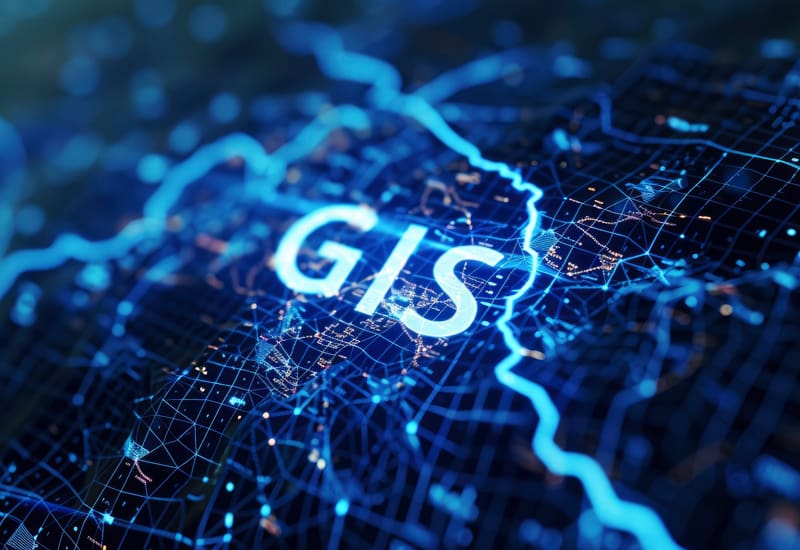Enhancing State and Local Government Operations with GIS Technology
Leveraging Geographic Information Systems (GIS) in State and Local Government
Kelsey Young, Copywriter and Media Specialist
5 Min Read

Geographic Information Systems (GIS) have become vital tools in both state and local government operations, offering transformative capabilities across various sectors. From enhancing public safety to streamlining urban planning, and environmental monitoring, GIS applications are integral to modern governance. This article delves into how state and local governments leverage GIS to improve decision-making, manage resources, and provide better services to their communities.
GIS in State Government: Enhancing Decision-Making and Efficiency
State governments utilize GIS to support a wide range of functions, from transportation planning to environmental protection. GIS in state government is particularly crucial for analyzing spatial data, enabling officials to make informed decisions based on geographic patterns and trends. For example, GIS can be used to map infrastructure, monitor natural resources, and assess environmental impacts, providing a comprehensive view that is essential for effective governance.
GIS technology helps state governments manage their vast array of resources more efficiently. By integrating data from multiple sources, GIS enables the analysis and visualization of complex datasets, making it easier to identify patterns and make strategic decisions. This is particularly valuable in areas such as public health, where GIS can track the spread of diseases and allocate resources to areas in need.
GIS in Local Government
Local governments are increasingly adopting GIS technology to enhance public service delivery and engage with their communities. GIS in local government is used for a variety of purposes, including zoning and land use planning, public safety, and infrastructure management. By providing detailed spatial data, GIS helps local authorities optimize the allocation of resources and improve the efficiency of public services.
One of the key benefits of GIS in local government is its ability to enhance citizen engagement. Many local governments use GIS platforms to make data accessible to the public, allowing citizens to explore maps and information related to their community. This transparency fosters trust and encourages public participation in decision-making processes. For example, residents can use GIS tools to report issues such as potholes or illegal dumping, which local authorities can then address more quickly and effectively.
GIS Applications in Public Safety
GIS applications in public safety are critical for enhancing emergency response and crime analysis. State and local governments use GIS to prepare for and respond to emergencies, such as natural disasters or public health crises. GIS technology allows for the mapping of hazard zones, identification of vulnerable populations, and planning of evacuation routes, ensuring that resources are deployed where they are most needed.
In law enforcement, GIS applications are used for crime mapping and analysis. By analyzing spatial data, police departments can identify crime hotspots and allocate resources more effectively. This data-driven approach not only helps in preventing crime but also improves the overall safety and security of communities. For example, GIS can be used to analyze patterns of theft or vandalism, enabling law enforcement to focus their efforts on the most affected areas.
GIS for Urban Planning
GIS for urban planning is a crucial tool for designing sustainable and resilient cities. Urban planners use GIS to analyze land use, population distribution, and infrastructure, providing a comprehensive view that aids in the development of zoning regulations and urban development plans. GIS technology allows planners to simulate different development scenarios, helping them to make informed decisions that balance growth with sustainability.
For instance, GIS can be used to identify suitable locations for new public facilities, such as schools or hospitals, based on population density and accessibility. This ensures that resources are distributed equitably and that urban development is planned in a way that meets the needs of all residents. Additionally, GIS helps in the planning of public transportation systems by analyzing traffic patterns and optimizing routes, reducing congestion and improving overall mobility.
Environmental Monitoring with GIS
Environmental monitoring with GIS is a powerful tool for state and local governments to protect natural resources and promote sustainability. GIS technology enables the monitoring of environmental changes, such as deforestation, water quality, and wildlife habitats. This information is critical for developing policies and strategies aimed at conservation and environmental protection.
For example, GIS can be used to track the effects of climate change on coastal areas, helping governments plan for sea-level rise and other impacts. In addition, GIS technology can monitor air and water quality, providing data that is essential for public health and safety. By integrating data from various sources, GIS offers a comprehensive view of environmental conditions, enabling proactive management and policy development.
The Future of GIS in State and Local Government
The future of GIS in state and local government looks promising, with advancements in technology such as artificial intelligence (AI), machine learning, and the Internet of Things (IoT) set to enhance GIS capabilities further. These technologies will enable more sophisticated analysis and predictive modeling, offering new insights into urban planning, public safety, and environmental monitoring.
However, there are challenges to be addressed, including the need for skilled personnel, data management issues, and ensuring equitable access to GIS tools and data. State and local governments must continue to invest in training and infrastructure to fully leverage the potential of GIS technology.
Final Thoughts
Geographic Information Systems are essential tools for state and local governments, providing the data and analysis needed to make informed decisions and improve public services. From enhancing public safety to promoting sustainable urban planning and environmental monitoring, GIS applications are transforming the way governments operate. As technology continues to evolve, the role of GIS in state and local government will only become more critical, helping to build more resilient, sustainable, and equitable communities.




